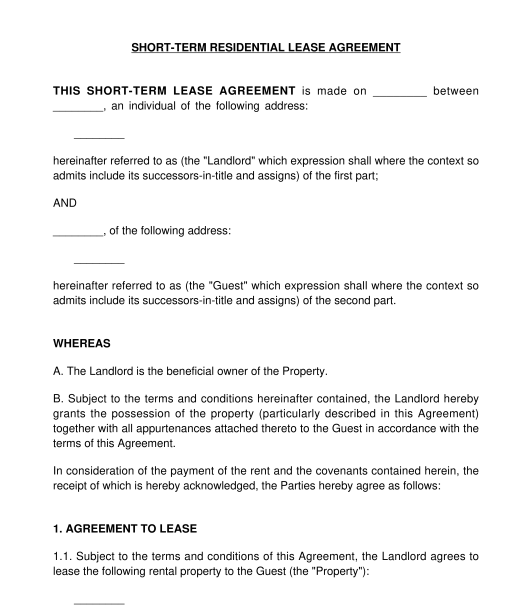 07/09/2025
07/09/2025

Answer a few questions and your document is created automatically.

Your document is ready! You will receive it in Word and PDF formats. You will be able to modify it.

 07/09/2025
07/09/2025
 Word and PDF
Word and PDF
 7 to 11 pages
7 to 11 pages



A Short-Term Residential Lease Agreement is an agreement between a property owner (landlord) and a renter (tenant), outlining the terms of renting a residential property for a short duration.
This type of agreement is typically used when a person needs temporary housing for a specific period, usually less than a year. There are several situations in which a person might use a short-term residential lease, such as vacation rentals, temporary housing, or short-term work-from-home assignments.
While this document is used for a shorter duration, the Residential Lease Agreement typically involves a longer-term lease arrangement, ranging from several years. On the other hand, the Commercial Lease Agreement is used to rent business properties for a longer duration.
This document requires basic information about the parties, including the following information:
After completing this form, the document should be printed. The landlord and tenant should sign the document. Alternatively, signing can be done electronically.
If the landlord is a company or other organization, an authorized officer, such as a manager, should sign on behalf of the landlord.
After signing, the parties should keep at least one signed copy of this document for their record.
Various states in Nigeria have their tenancy laws. These laws include:
You fill out a form. The document is created before your eyes as you respond to the questions.
At the end, you receive it in Word and PDF formats. You can modify it and reuse it.
Guides to help you
Short-Term Residential Lease Agreement - FREE
Country: Nigeria